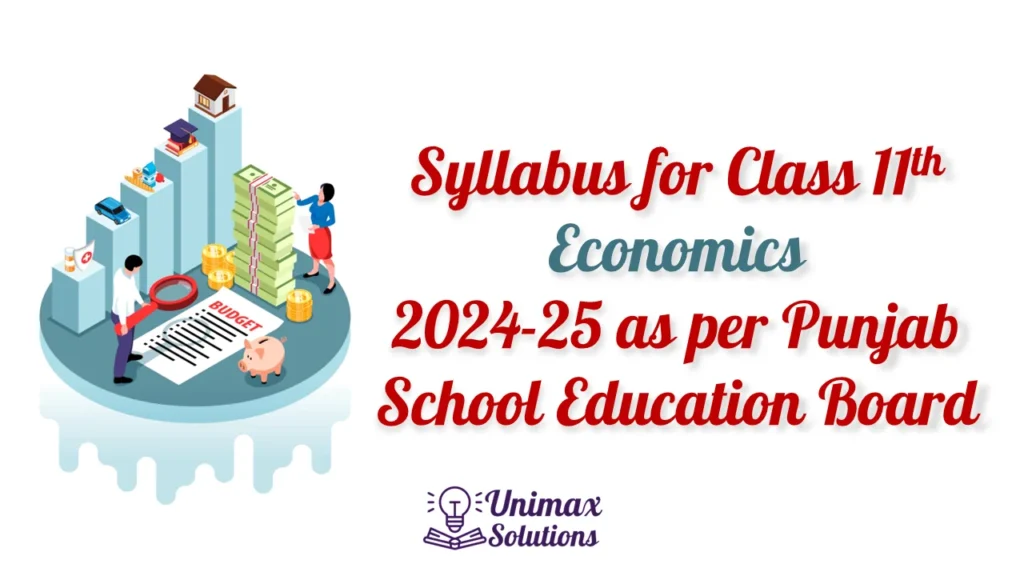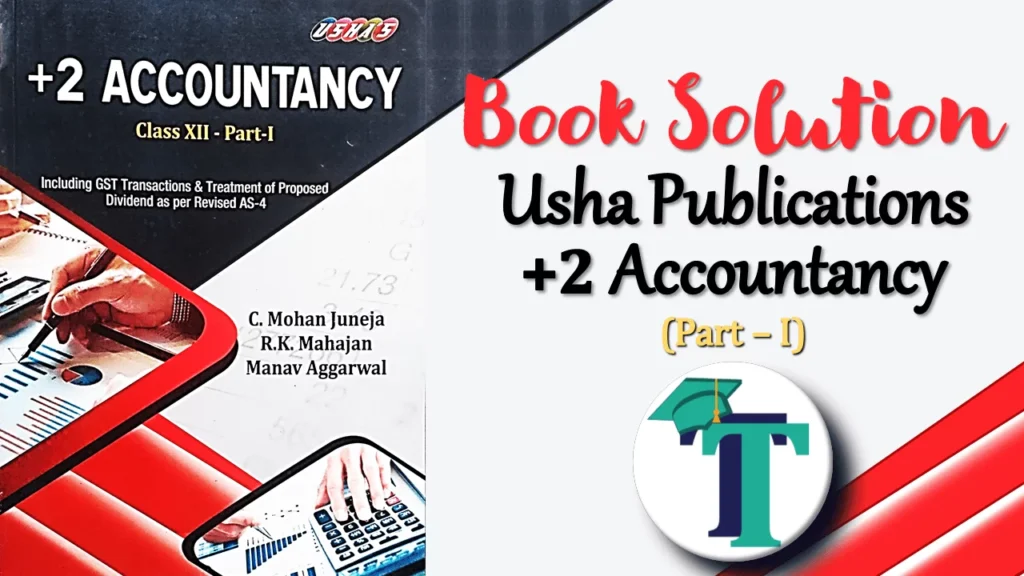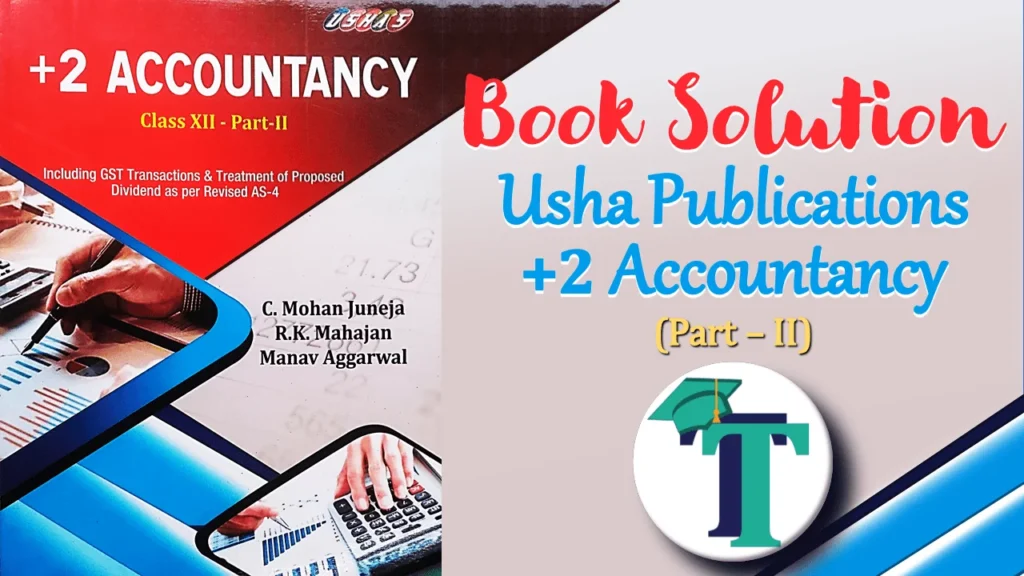
Advertisement
In this article, you can check out the Syllabus for Class 11 Economics 2024-25 – PSEB and you can also download the syllabus in the PDF Format.
Syllabus for Class 11 Economics 2024-25 – PSEB
Syllabus
Session: 2024-25
Class: 10+1
Subject: Economics (Humanities/Commerce)
Part-A
Indian Economic Development
UNIT-1 DEVELOPMENT POLICIES AND EXPERIENCES
Chapter 1: Indian Economy on the eve of Independence: Introduction: Low level of economic development, occupational structure and demographic position. Three sectors of Indian economy on the eve of independence: Agriculture, Industry and Service Sector.
Chapter 2: Indian Economy 1950-1990: Introduction, the goals of Five-Year plans, Agriculture: Land reforms, The green revolution, Industry and trade, Public and Private sectors in Indian Industrial development, Industrial policy resolution 1956, Small scale industry, Trade policy, Effect of policies on industrial development, Five-year plans in India, NITI Aayog: Structure and objectives of NITI Aayog.
UNIT: 2 ECONOMIC REFORMS SINCE 1991
Chapter 3: Liberalization, Privatization and Globalization- An Appraisal: Background, Liberalization, Privatisation, Globalisation, Indian Economy during reforms: An Assessment.
UNIT:3 CURRENT CHALLENGES FACING INDIAN ECONOMY
Chapter 4: Human Capital Formation in India: Meaning, Sources of human capital, Need and Role of Human Capital formation, State of Human Capital in India, Various Human capital index: PQLI, HDI, Construction of HDI.
Chapter 5: Rural Development: Meaning, Institutions that cater rural development like Panchayats, NABARD, Commercial Banks, Co-operatives, Regional Rural Banks and other Ancillary Sources of Finance.
Chapter 6: Employment: Growth, Informalization and other issues: Workers and employment, Participation of people in employment, Self-employed and hired workers, Employment in firms, factories and offices, Growth and changing structure in employment, Informalization of Indian workforce, Unemployment; Government and employment generation.
Chapter 7: Environment and Sustainable Development: Environment: Definition and Functions, State of India’s Environment. Sustainable Development, Strategies of Sustainable Development. Modern initiatives: Organic Farming.
PART-B
PUNJAB ECONOMY
UNIT 4: AN OVERVIEW OF PUNJAB ECONOMY
Chapter 1: Physical and Human Resources of Punjab: Physical Features of Punjab, Physical Resources of Punjab: Geographical and Socio-Cultural Division of Punjab, Soils, Water resources, Minerals, Forest resources, Power resources. Human Resources of Punjab, Size and growth of population, sex ratio, literacy ratio, density of population, trends in urbanization, occupational distribution of population.
Chapter 2: Agricultural and Industrial Development of Punjab: Salient Features of Punjab’s agriculture, major crops of Punjab, Agricultural marketing in Punjab, Green revolution in Punjab-A critical assessment. Industrial Development of Punjab, Major industries of Punjab, need for industrialization in Punjab, Difficulties in the way of Industrialization in Punjab, steps taken by government to develop industries in Punjab.
Chapter 3: Fiscal State of Punjab: Sources of revenue and expenditure of Punjab government, Overall Budgetary Position of Punjab Government, Public debt of Punjab Government.
PART-C
STATISTICS
UNIT 5: STATISTICS IN ECONOMICS
Chapter 1: Introduction: Why Economics, Statistics and Economics, what is statistics, what statistics does.
Advertisement
UNIT 6: COLLECTION, ORGANIZATION AND PRESENTATION OF DATA
Chapter 2: Collection of Data: What are the sources of data, how do we collect the data, Census and Sample surveys, sampling and non-sampling errors, census of India and NSO. Chapter 3: Organization of Data: raw data, classification of data, variables: continuous and discrete, what is frequency distribution, bivariate frequency distribution.
Chapter 4: Presentation of Data: Textual presentation of data, tabular presentation of data, tabulation of data and parts of a table, diagrammatic presentation of data.
UNIT 7: ANALYSIS OF DATA
Chapter 5: Measures of Central Tendency: Arithmetic mean, median, quartile, decile, percentile, mode, relative position of mean, median and mode.
Chapter 6: Correlation: Types of correlation, Techniques for measuring correlation: Scatter diagram, Karl Pearson’s coefficient of correlation, Spearman’s rank correlation, Appendix to Correlation.
Chapter 7: Index Numbers: What is an index number, Construction of an index number: Simple aggregative method, Simple average of price relative method, Some important index numbers: Consumer price index, wholesale price index, index of industrial production, human development index, Sensex, Issues in the construction of an index number, Index number in economics.
Chapter 8: Use of Statistical Tools: Construction of Project Work in Economics: various steps in the construction of project work and suggested list of projects.
Syllabus for Class 11 Economics 2024-25 – PSEB – Download PDF
Download the PDF of the Syllabus for Class 11 Economics 2024-25 – PSEB For Free of cost
Check out Solutions of Various Books of Accountancy for Class 12 For PSEB
Punjab School Education Board (PSEB) Solutions of Usha Publication.
If you’re a student enrolled in the Punjab School Education Board Class 12, it’s essential to explore a wide range of books to cover the syllabus thoroughly. While the prescribed textbooks are undoubtedly valuable, supplementing your studies with additional resources can enhance your understanding and knowledge. Consider checking out other books that align with the curriculum, offering different perspectives and insights on the subjects you’re studying. These supplementary materials can provide you with alternative explanations, practice questions, and examples that may aid in clarifying complex concepts. Moreover, exploring diverse sources can expose you to a variety of writing styles and viewpoints, fostering a broader understanding of the subjects. So, seize the opportunity to expand your learning by delving into other books that can complement your studies and contribute to your academic growth.
Advertisement
Advertisement


